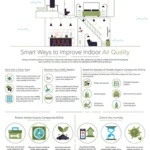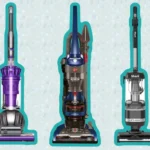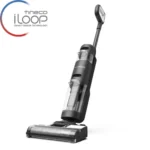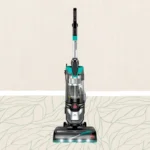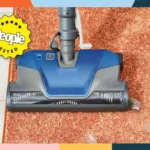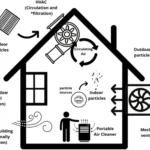Have you ever found yourself sneezing, coughing, or struggling to breathe in your own home? While it’s easy to blame seasonal allergies or the common cold, the true culprit may be hiding within your carpets, furniture, and air ducts. Dust mites, pet dander, and pollen are common allergens that can cause respiratory issues and trigger allergy symptoms, and they can be virtually impossible to eliminate through regular cleaning methods. That’s where smart vacuum cleaners come in. With advanced features like high-powered suction, HEPA filters, and mapping technology, smart vacuums can help reduce these allergens and promote healthier air quality in your home. In this article, we’ll explore the benefits of using a smart vacuum cleaner to combat respiratory issues and improve your overall well-being.
The Dangers of Dust Mites, Pet Dander, and Pollen
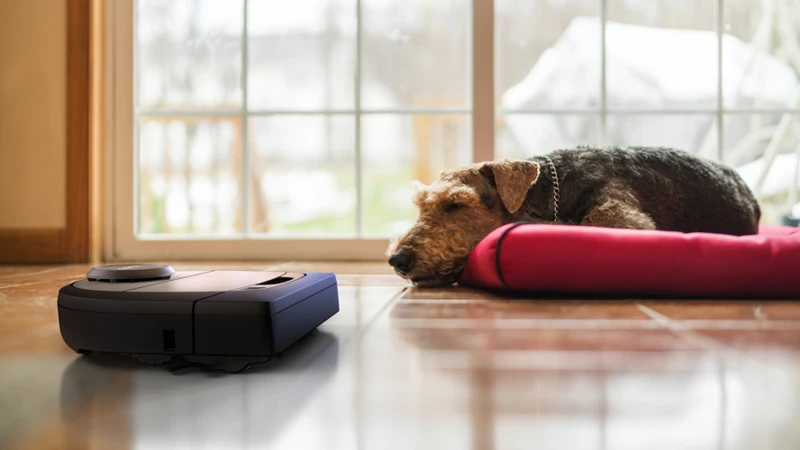
Many of us underestimate the potential harmful effects of microscopic particles like dust mites, pet dander, and pollen in our homes. These tiny allergens can cause a variety of respiratory issues, particularly for people with allergies, asthma, or weakened immune systems. Avoiding exposure to these allergens is crucial to preventing respiratory issues, and this is where smart vacuum cleaners can make a significant difference. In the next section, we will dive deeper into what these allergens are and how they affect our health. For more information on the importance of air purification with smart vacuum cleaners, check out our article on air purification with smart vacuum cleaners.
What Are Dust Mites?
Dust mites are microscopic bugs that are part of the arachnid family. These bugs are commonly found in many homes, living in warm and humid environments such as bedding, upholstery, and carpets. Dust mites feed on dead skin cells that are naturally shed by humans and pets, making them a common allergen for many people.
Symptoms of dust mite allergies include:
- Sneezing
- Runny or stuffy nose
- Itchy eyes, mouth or throat
- Congestion
- Wheezing and difficulty breathing
- Coughing
- Postnasal drip
- Skin rashes and other dermatological symptoms
According to the Asthma and Allergy Foundation of America, dust mites are one of the most common household allergens, affecting millions of people around the world. Due to their microscopic size, they can easily go undetected and cause respiratory issues for those who are sensitive or allergic to them.
Fortunately, smart vacuum cleaners can help alleviate some of the risks associated with dust mite infestations. By utilizing advanced filtration systems, smart vacuums can effectively capture and contain dust mites and other allergens, preventing them from being released back into the air.
HEPA filters are particularly effective at removing dust mites and other allergens from the air. These high-efficiency filters are capable of trapping even the smallest particles, including pollen, pet dander, and dust mites. When combined with strong suction power, these filters can significantly improve indoor air quality, reducing the risk of respiratory issues for those with dust mite allergies.
In the next section, we’ll take a closer look at how smart vacuum cleaners work and the features that make them effective tools for reducing respiratory issues.
What Is Pet Dander?
Pet dander is made up of tiny, usually microscopic flecks of skin shed by cats, dogs, rodents, birds, and other animals with fur or feathers. While it’s difficult to eliminate pet dander from your home entirely, using a smart vacuum cleaner with the right features can help reduce the amount of dander in the air, reducing the symptoms for people who are sensitive to it.
Pet dander is a common allergen that can cause a variety of respiratory issues, including sneezing, runny nose, itching, and congestion. For people with asthma, exposure to pet dander can trigger severe symptoms, such as wheezing and difficulty breathing.
To better understand the importance of fighting pet dander, take a look at the following table:
| Problem | Effect |
|---|---|
| Asthma | Pet dander is one of the most common triggers of asthma attacks, making it difficult for people with asthma to breathe. |
| Allergies | Exposure to pet dander can cause itchy eyes, a runny nose, and even hives in some people. |
| Respiratory Infections | Exposure to pet dander can weaken the immune system and make it more difficult for the body to fight off respiratory infections. |
A smart vacuum cleaner equipped with a HEPA filter can trap pet dander particles as small as 0.3 microns in size. Some smart vacuum cleaners have specially designed brushrolls that can pick up pet hair and dander more effectively, while others have sensors that can detect areas with a lot of pet activity and focus cleaning efforts on those areas.
Using a smart vacuum cleaner isn’t a substitute for regular cleaning and grooming of your pets, but it can help reduce the amount of pet dander in your home and make it easier to breathe for those with respiratory issues.
What Is Pollen?
Pollen is a fine powdery substance that comes from the male parts of flowers, trees, grasses, and weeds. Pollen plays a crucial role in plant reproduction, but it can cause severe respiratory issues for some people. Individuals with seasonal allergies experience a range of symptoms such as sneezing, congestion, runny nose, itchy eyes, and throat irritation when they inhale pollen.
Here are some important facts about pollen:
- There are thousands of different types of pollen, and their shapes and sizes vary greatly.
- The size of pollen grains can range from 10 microns to 100 microns, which makes them too small to see with the naked eye.
- Pollen is carried by the wind or insects to reach other plants for pollination.
- Seasonal allergies caused by pollen are most common in the spring and fall when plants are releasing large amounts of pollen into the air.
- The severity of seasonal allergy symptoms can vary depending on the type of pollen and the individual’s sensitivity to it.
Pollen is a significant contributor to poor indoor air quality, especially if windows are left open or if there is no air filtration system in place. This is where a smart vacuum cleaner with efficient filters and suction power can come in handy in removing pollen and other allergens from your home.
How Smart Vacuum Cleaners Work
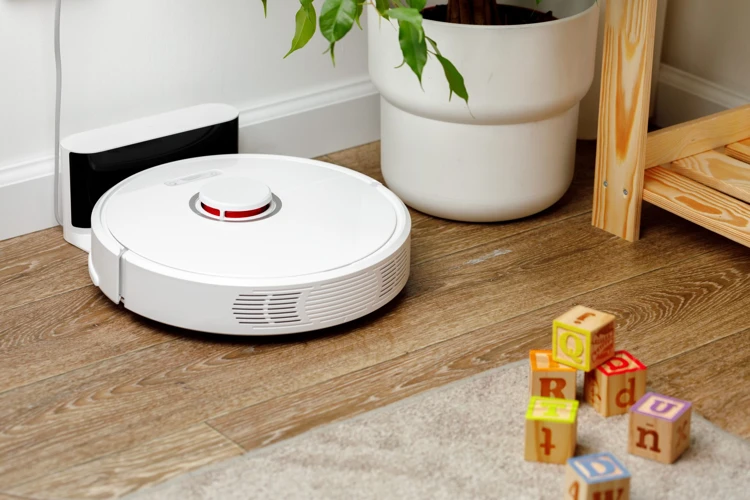
Have you ever wondered how a vacuum cleaner can simplify your life and keep your home clean? It’s not just about sucking up dirt and debris from the carpet or floor. With the advancement of technology, vacuum cleaners have become smarter and more efficient. But how exactly do smart vacuum cleaners work? Let’s take a closer look at the technology behind these cleaning machines.
Filters and Suction Power
Filters and suction power are two critical aspects to consider when selecting a smart vacuum cleaner. The filters in the vacuum cleaner play a crucial role in capturing tiny particles such as dust, pet dander, and pollen, while suction power determines how well these particles are removed from surfaces.
Here are several factors to keep in mind when evaluating the filters and suction power of smart vacuum cleaners:
- Type of filter: There are various types of filters available in smart vacuum cleaners, such as HEPA filters, foam filters, and washable filters. Of these, HEPA filters are considered the most effective at capturing tiny particles that cause respiratory issues.
- Filter replacement: Filters require regular cleaning and replacement, depending on the frequency of use. Some smart vacuum cleaners come with filters that need to be replaced after a set number of uses or time period.
- Suction power: This is an essential aspect when it comes to smart vacuum cleaners. The higher the suction power, the more effectively the vacuum cleaner can remove dust, dirt, and other particles from surfaces. The suction power of a vacuum cleaner is measured in watts or air watts.
- Battery life: For cordless smart vacuum cleaners, the battery life determines how long the vacuum cleaner can operate without needing to be recharged. A more extended battery life allows for more efficient cleaning and reduces the need for frequent recharging.
- Noise level: While suction power is essential, it is also essential to consider the vacuum cleaner’s noise level. Some models tend to be noisier than others, which could be a nuisance when trying to clean at odd hours or in shared living spaces.
It is vital to keep in mind that a high-quality filter and powerful suction does not necessarily mean that a smart vacuum cleaner is an excellent choice. Other factors such as price, additional features, and user-friendly design must be considered to select the best smart vacuum cleaner to help reduce respiratory issues.
Mapping and Navigation
Smart vacuum cleaners come equipped with advanced mapping and navigation technology that allows them to move around your home seamlessly while avoiding obstacles. This technology uses various sensors and mapping algorithms to create a virtual map of your home, which it then uses to determine its optimal cleaning route.
Mapping: The mapping feature helps the smart vacuum cleaner to navigate through your home efficiently. As the vacuum moves around, it creates a map of your home, marking the locations of furniture, walls, and other obstacles. It then uses this information to plan the most efficient cleaning route, ensuring effective cleaning without wasting time.
Navigation: Navigation is crucial for a smart vacuum cleaner. The device comes with sensors that detect obstacles and navigate around them. The vacuum cleaner can also detect stairs and avoid falling off them. The sensors help the vacuum cleaner to move around your home without any supervision, saving you time and effort.
Smart vacuums can also be controlled through various methods, such as an app on your phone or through voice commands, making it easy to customize the cleaning route or schedule. You can set up virtual walls or no-go zones in specific areas that you want to avoid or exclude from the cleaning path.
The innovative mapping and navigation technology of a smart vacuum cleaner ensures that it provides efficient and effective cleaning performance with minimal intervention required from the user. With this technology, you can trust that your vacuum cleaner will provide a thorough and satisfactory cleaning experience every time.
Additional Features and Customization
Smart vacuum cleaners come equipped with a variety of additional features and customization options that make them even more efficient and user-friendly. Let’s take a look at some of the most useful ones:
| Feature | Description |
|---|---|
| Mobile App Control | Some smart vacuums can be controlled via a mobile app, allowing you to start, stop, schedule or customize your cleaning from your smartphone. |
| Voice Control | With compatible voice assistants, such as Amazon Alexa or Google Assistant, you can control your smart vacuum cleaner with simple voice commands. |
| Custom Scheduling | You can set up a custom cleaning schedule for your smart vacuum cleaner to ensure that it cleans automatically at times that are convenient for you. |
| Zone Cleaning | Some smart vacuums allow you to create virtual boundaries or zones, so you can instruct it to only clean certain areas or rooms in your home. |
| Climbing Ability | For homes with multiple floor types, some smart vacuums can climb up and clean different levels, such as carpets and hardwood floors, with ease. |
| Auto Recharge and Resume | When the battery is low, some smart vacuums can automatically return to their charging dock and then resume cleaning from exactly where they left off. |
| Multiple Cleaning Modes | Smart vacuums may offer different cleaning modes, such as spot cleaning, edge cleaning, and full-room cleaning to ensure a thorough cleaning process. |
All of these additional features can enhance the cleaning experience and make it more convenient and tailored to your specific needs. However, it’s important to consider which features are most important to you when choosing a smart vacuum cleaner. Some models may prioritize certain features over others, and the price can vary significantly based on the features offered. It’s crucial to compare different models and read user reviews to make an informed decision.
The Benefits of Using a Smart Vacuum Cleaner
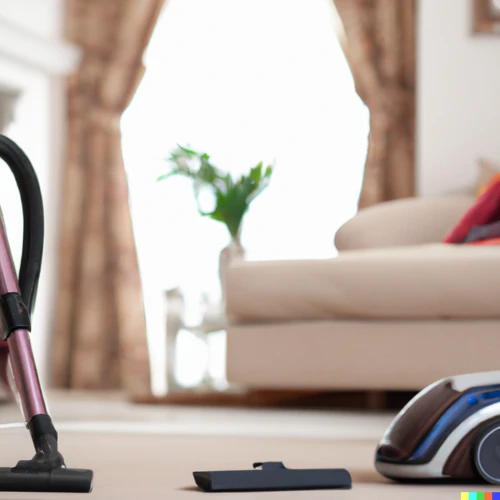
When it comes to keeping our homes clean, vacuuming is a crucial task that we can’t overlook. However, traditional vacuum cleaners might not be effective in removing allergens and pollutants that can trigger respiratory issues like asthma, allergies, and other similar conditions. This is where smart vacuum cleaners come into play. These advanced devices offer several benefits that go beyond just cleaning floors, and they can make a significant difference in the air quality of your home. Let’s take a closer look at how smart vacuum cleaners can help to reduce respiratory issues and improve your overall quality of life.
Improved Air Quality
One of the most significant benefits of using a smart vacuum cleaner is the improved air quality that it provides. Traditional vacuum cleaners can stir up dust and allergens, causing them to circulate in the air, and ultimately lead to respiratory issues. In contrast, smart vacuum cleaners are equipped with high-efficiency filters that can capture even the smallest particles, such as dust mites, pollen, and pet dander, that traditional vacuum cleaners can miss.
Smart vacuum cleaners reduce the amount of dust and debris left on surfaces, which can contribute to poor indoor air quality. The filters used in smart vacuum cleaners are designed to trap dust and other tiny particles while keeping the air clean and fresh. By removing these harmful particles from the air, smart vacuum cleaners improve overall air quality.
In addition to removing allergens from the air, smart vacuum cleaners help to eliminate odors and freshen up your living spaces. Some models are also capable of detecting and removing volatile organic compounds (VOCs), which can be harmful to human health. By reducing the concentration of these harmful particles in the air, smart vacuum cleaners can have a significant impact on the overall air quality of your home or office space.
To summarize, with their advanced filters and powerful suction capabilities, smart vacuum cleaners are highly effective tools for improving air quality. Not only do they remove dust and allergens from the air, but they can also help eliminate unpleasant odors and VOCs. As a result, investing in a smart vacuum cleaner is a smart choice for anyone looking to breathe cleaner, fresher air at home or in the workplace.
Reduced Respiratory Issues
Using a smart vacuum cleaner can greatly help reduce respiratory issues caused by airborne particles. By utilizing advanced filters and suction power, smart vacuums are able to capture and remove even the smallest particles from the air.
Here are some ways smart vacuums can help reduce respiratory issues:
- Effective Dust and Allergen Removal: Smart vacuum cleaners are equipped with powerful filters that can capture tiny dust particles, pollen, pet dander, and other allergens that can trigger respiratory issues. This is especially helpful for those who suffer from dust allergies or asthma.
- Elimination of Dust Mites: Smart vacuums work to eliminate dust mites, which are microscopic pests that feed on dead skin cells shed by humans and pets. Dust mites are a common cause of respiratory issues and can be found in carpets, furniture, and bedding. By removing them with a smart vacuum, you can greatly reduce the risk of respiratory problems.
- Reduced Exposure to Harmful Chemicals: Traditional cleaning products can contain harsh chemicals that can irritate the respiratory system. Smart vacuums are a more eco-friendly and safer option for cleaning your home, as they use no harmful chemicals and can help reduce exposure to allergens and pollutants.
- Improved Air Quality: Using a smart vacuum cleaner for regular cleaning can help improve indoor air quality by removing pollutants and allergens from the air. This can lead to better respiratory health and overall wellbeing.
Using a smart vacuum cleaner can greatly reduce respiratory issues and promote better health. By investing in a quality smart vacuum, you can also feel confident knowing that your home is clean and free of harmful airborne particles.
Efficient Cleaning and Dust Removal
One of the major benefits of using a smart vacuum cleaner is its efficient cleaning and dust removal capabilities. Unlike traditional vacuum cleaners, smart vacuums have advanced features that make cleaning more thorough and effective.
For starters, smart vacuums come equipped with powerful motors that provide strong suction. This suction power helps the vacuum cleaner pick up not only large debris but also microscopic dust particles that can cause respiratory issues. Smart vacuums are designed to reach even the most hard-to-reach places in your home, such as under furniture and tight corners, thanks to their slim build.
In addition to powerful suction, smart vacuums are fitted with advanced filters that capture a wide range of allergens and pollutants. HEPA filters, for example, are capable of trapping 99.97% of particles as small as 0.3 microns, including dust mites, pet dander, and pollen, ensuring that the air in your home is as clean and healthy as possible.
To further increase their efficiency, smart vacuums are equipped with sensors that allow them to detect areas that require more cleaning. Once these sensors detect a concentrated area of dirt, such as a pet bed or litter box, the smart vacuum will focus its cleaning efforts in that area until it’s completely clean.
The following table highlights some of the main features of a smart vacuum cleaner when it comes to efficient cleaning and dust removal:
| Feature | Description |
|---|---|
| Powerful motor | Provides strong suction to pick up microscopic dust and dirt particles that traditional vacuum cleaners might miss. |
| Advanced filters | HEPA filters trap 99.97% of particles as small as 0.3 microns, ensuring that the air in your home is as clean and healthy as possible. |
| Sensors | Detect areas that require more cleaning and focus cleaning efforts in these areas until they’re completely clean. |
Smart vacuum cleaners are a great investment for anyone looking to improve the air quality in their home and reduce respiratory issues caused by the presence of dust mites, pet dander, and pollen. With their powerful suction, advanced filters, and efficient cleaning and dust removal capabilities, they make cleaning easy and effective.
Smart Vacuum Cleaners – Which One to Choose?
Now that you understand the benefits and features of smart vacuum cleaners, it’s time to choose the right one for your needs. With so many different brands and models on the market, it can be overwhelming to make a decision. However, with some careful consideration and research, you can find a smart vacuum cleaner that fits your budget and cleaning requirements. In this section, we will explore the factors to consider when choosing a smart vacuum cleaner, including brands and models, price and features, and user reviews and ratings. Let’s dive in and discover the best options available.
Brands and Models
When it comes to choosing a smart vacuum cleaner that can help reduce respiratory issues, it’s essential to consider the brands and models available on the market. Here are some top brands and models you should consider when making your choice:
- Dyson V11 Absolute – This smart vacuum cleaner offers powerful suction and advanced filtration system that captures allergens and microscopic dust particles. It also has a high torque cleaner head that adapts to different floor types, making it easy to clean carpets and hard floors.
- iRobot Roomba i7+ – This robotic vacuum is equipped with a premium 3-stage cleaning system that uses dual multi-surface rubber brushes and 10X suction to remove pet hair, dust, and debris. It also features a high-efficiency filter that traps 99% of cat and dog allergens.
- Shark IQ Robot RV1001AE – This robot vacuum cleaner seamlessly navigates your home, mapping and adapting to your floor plan to clean carpets and hard floors. It also features a HEPA filter that traps 99.9% of dust and allergens, making it ideal for allergy sufferers.
- Ecovacs Deebot N8 Pro+ – This smart vacuum cleaner uses a 3D technology to map your home and create an efficient cleaning path. It also features an advanced brushless motor that delivers powerful suction, and a high-efficiency filter that captures up to 99.26% of dust and pollen particles.
- Bissell PowerEdge Pet Hardwood Floor Corded Vacuum – This corded vacuum cleaner is ideal for pet owners, thanks to its V-shaped design that captures both large debris and fine dust particles. It also features a washable foam filter that captures pet hair and allergens, making it a great option for people with respiratory issues.
These are just a few of the many smart vacuum cleaner brands and models available on the market. When choosing a smart vacuum cleaner, it’s important to consider your specific needs and budget. Reading user reviews and ratings can also provide insight into the effectiveness of different vacuum cleaners when it comes to reducing respiratory issues.
Price and Features
When it comes to choosing a smart vacuum cleaner, price cannot be overlooked. These devices come at different price points, and the features tend to vary accordingly. Some have more advanced features and are more expensive, while others are more basic and are more affordable. Here are some of the factors to consider when deciding on a smart vacuum cleaner based on price and features:
- Type of vacuum: The type of vacuum cleaner you choose will impact the price. Stick vacuums are generally less expensive than robot vacuums, for example.
- Brand reputation: Established brands tend to charge more for their products. However, they usually offer superior quality and customer support.
- Power and suction: High-end vacuum cleaners come with powerful motors and suction capabilities, which translate to more efficient cleaning. Consider getting a device with strong suction if you have pets or allergies.
- Battery life: If you opt for a cordless vacuum, battery life is a crucial factor. Higher-priced models tend to come with longer-lasting batteries.
- Smart features: More expensive options often come with advanced smart features, such as voice control, floor mapping, and customized cleaning schedules. These features boost convenience but also increase the price tag.
- Filtering system: If you have allergies or asthma, it’s important to invest in a vacuum cleaner with a high-quality filtering system. HEPA filters are the gold standard, but they also come at a higher price point.
- Additional accessories: Some vacuum cleaners come with additional accessories, such as crevice tools or motorized brush rolls. These add-ons can improve the device’s functionality but also increase the price.
Ultimately, the price and features you go for will depend on your personal needs and preferences. Some people are willing to splurge on high-end models with advanced features, while others prefer to stick to more basic vacuum cleaners that get the job done. Whatever your choice, make sure to read reviews and ratings to ensure you’re getting the best value for your money.
User Reviews and Ratings
When it comes to choosing a smart vacuum cleaner, one of the best ways to know if a particular model performs well is by looking at User Reviews and Ratings. This part of the purchasing process allows potential buyers to see how current owners feel about their purchase and the vacuum cleaner’s effectiveness.
User Reviews and Ratings can be found on various online shopping websites, including Amazon, Best Buy, and Walmart. When reading through these reviews, pay attention to the following key points:
Overall Ratings: The average rating of a particular model can be found at the top of the reviews section. Make sure to take this number into account when considering a purchase.
Detailed Reviews: Users will often leave detailed feedback regarding their experience with the vacuum cleaner. Take note of any common themes or concerns that multiple users mention.
Pros and Cons: Many reviews include a pros and cons list, outlining the strengths and weaknesses of the product. These lists can help narrow down which vacuum cleaner would be the best fit for your needs.
Verified Purchase: Look for reviews that have the “Verified Purchase” badge next to them, indicating that the user actually bought the product. These reviews are typically more trustworthy than those left by people who have not purchased the product.
When considering User Reviews and Ratings, it’s important to keep in mind that some people may have higher or lower expectations than others. It’s also important to read a range of reviews, both positive and negative, to get a balanced understanding of the product’s performance.
Here’s a breakdown of some of the top-rated smart vacuum cleaners based on User Reviews and Ratings:
| Brand/Model | Rating (out of 5) | Price | Features |
|---|---|---|---|
| iRobot Roomba i7 | 4.6 | $699.99 |
|
| Shark IQ Robot R101AE | 4.3 | $599.99 |
|
| Eufy RoboVac G30 Verge | 4.5 | $349.99 |
|
Ultimately, User Reviews and Ratings can give potential buyers valuable insight into the performance of a smart vacuum cleaner. By taking the time to read through and analyze reviews, shoppers can feel confident in their purchase and make an informed decision.
Conclusion
In conclusion, it is clear that smart vacuum cleaners can significantly help reduce respiratory issues caused by dust mites, pet dander, and pollen. These microscopic allergens are present in every home, which means that no one is completely free from the impact they can have on the respiratory system. However, by investing in a smart vacuum cleaner with proper filters and suction power, it is possible to efficiently clean and remove these allergens from the indoor environment.
Moreover, some smart vacuum cleaners come equipped with mapping and navigation technology, which can further enhance their efficiency and precision when cleaning. Certain models even offer additional features and customization options, such as scheduling and zone cleaning, allowing users to tailor the cleaning process to their specific needs.
By improving the air quality within a home, smart vacuum cleaners can also help alleviate respiratory issues among residents. The reduction of allergens in the air can lead to fewer instances of sneezing, coughing, and allergy-related symptoms.
When looking to purchase a smart vacuum cleaner, it is important to consider factors such as brands and models, price and features, and user reviews and ratings. These factors can help determine which vacuum will best fit a user’s needs, budget, and preferences.
Overall, smart vacuum cleaners offer an effective solution to reducing respiratory issues caused by indoor allergens. Investing in a high-quality model can provide significant benefits for both short-term and long-term health.
Frequently Asked Questions
Can smart vacuum cleaners really help reduce respiratory issues?
Yes, they can! Smart vacuum cleaners are equipped with advanced filters that capture dust mites, pollen, and pet dander, leading to improved air quality and reduced respiratory issues.
Do all smart vacuum cleaners come with HEPA filters?
No, not all smart vacuum cleaners come with HEPA filters. It’s important to check the specifications of each model before making a purchase if you specifically want a HEPA filter.
How often should I replace the filter in my smart vacuum cleaner?
This varies between models and depends on the frequency of use, but on average, filters should be replaced every 3-6 months to maintain optimal performance.
Can smart vacuum cleaners be controlled with a smartphone app?
Yes, many models can be controlled with a smartphone app, allowing you to schedule cleaning sessions and customize your cleaning preferences.
Do smart vacuum cleaners work well on carpets?
Yes, most smart vacuum cleaners work well on carpets, but it’s important to choose a model with strong suction power and an appropriate cleaning brush to effectively remove deep-seated dirt and debris.
Do smart vacuum cleaners come with a warranty?
Yes, most models come with a warranty that covers manufacturing defects and malfunctions.
Can smart vacuum cleaners be used on hardwood floors?
Yes, most models can be used on hardwood floors, but it’s important to choose a model with adjustable suction power and a brush roll that won’t scratch or damage the surface.
How do smart vacuum cleaners navigate around obstacles?
Most smart vacuum cleaners use sensors and mapping technology to detect obstacles and navigate around them, ensuring thorough cleaning coverage.
Are smart vacuum cleaners loud?
While noise levels can vary between models, most smart vacuum cleaners are designed to operate quietly, making minimal disturbance during cleaning sessions.
Will a smart vacuum cleaner completely eliminate the need for manual cleaning?
No, smart vacuum cleaners are designed to supplement manual cleaning, but they can reduce the frequency and effort of manual cleaning sessions, leading to a more efficient and effective cleaning routine.

